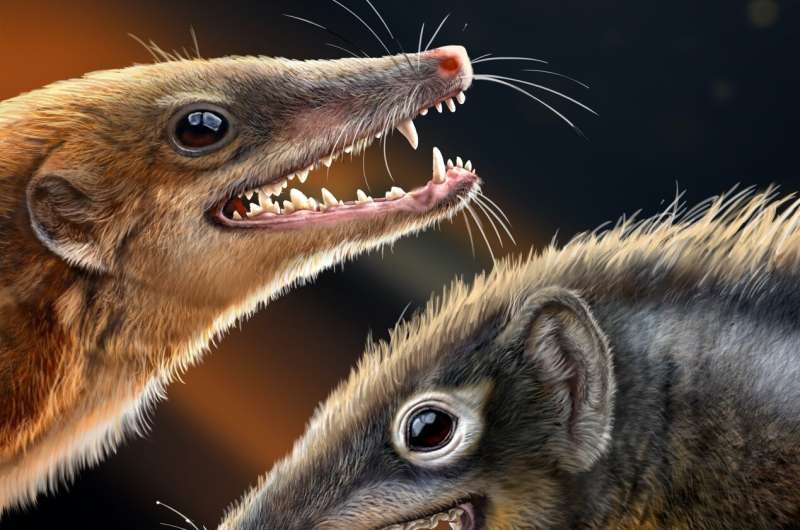This article has been reviewed according to Science X's editorial process and policies. Editors have highlighted the following attributes while ensuring the content's credibility:
fact-checked
peer-reviewed publication
proofread
Jurassic shuotheriids reveal earliest dental diversification of mammaliaforms

Paleontologists have presented a new insight into the initial dental variations across mammaliaforms, providing a fresh perspective on the evolutionary past of these ancient beasts.
The discovery, involving a team of international researchers including Professor Patricia Vickers-Rich from the Monash University School of Earth, Atmosphere and Environment, is published in Nature.
The research, conducted by a group of paleontologists from institutions in New York, China and Australia, examines the tooth structure of the Jurassic shuotheriids to gain a better understanding of their phylogenetic relationships and evolutionary paths.
"Our study questions current theories and offers a new viewpoint on the evolutionary history of mammaliaforms," said Professor Vickers-Rich.
"We provide vital insights into the phylogenetic relationships and evolutionary trajectories of shuotheriids, little known until recent discoveries in China, by explaining the intricate tooth shapes and occlusal patterns," she said.
Shuotheriids, mammal-like animals from the Jurassic Period, have perplexed scientists because of their unique dental characteristics.
Shuotheriids had what are termed "pseudotribosphenic teeth," with a "pseudotalonid" (a basin-like structure) located in front of the trigonid in the lower molars, unlike the tribosphenic pattern seen in current therian mammals where the taloned is located behind the trigonid.
"This unique tooth pattern has hindered our comprehension of shuotheriid relationships and the first steps in the evolution of mammaliaform species," Professor Vickers-Rich said.
The research team used advanced techniques to discover new specimens, some with complete skeletons, of Jurassic shuotheriids, enabling a thorough examination of their "pseudotribosphenic" teeth. In their analysis of this new material, the researchers were able to more fully analyze the dental structures using a variety of analysis, which suggested that shuotheriid dental structures appear to be very similar to those of docodontans.
The study suggests that shuotheriids do not have a genuine trigonid in their bottom teeth, indicating a closer relationship to docodontans than previously thought.
This reassessment of tooth architecture not only resolves unresolved interpretations but also triggers a reconsideration of the evolutionary connections within mammaliaforms.
Co-author, Dr. Thomas Rich of Museums Victoria Research Institute said, "In 1982, a single Jurassic small lower jaw with four teeth was placed at one point on the mammalian family tree by Minchen Chow and myself. Now two virtually complete specimens, analyzed in a different way, places all of them in a quite different place on the mammalian family tree. Additional specimens and different methods suggest different interpretations. This is how science often works."
Based on this new data, shuotheriids appear to be in a different clade named Docodontiformes, separate from ausktribosphenids, and thus grouped with docodontans. This discovery highlights the significance of pseudotribosphenic characteristics in elucidating the first diversification of mammaliaforms.
"The study emphasizes the presence of a significant variety of tooth morphology in early mammaliaforms, indicating unique ecomorphological adaptations throughout the evolutionary development within mammals," Professor Vickers-Rich said.
"The dental modifications such as transverse broadening of posterior teeth, cusp rearrangement and even rotation indicate the many ecological niches early mammaliaforms inhabited."
More information: Jin Meng, Jurassic shuotheriids show earliest dental diversification of mammaliaforms, Nature (2024). DOI: 10.1038/s41586-024-07258-7. www.nature.com/articles/s41586-024-07258-7
Journal information: Nature
Provided by Museum Victoria




















